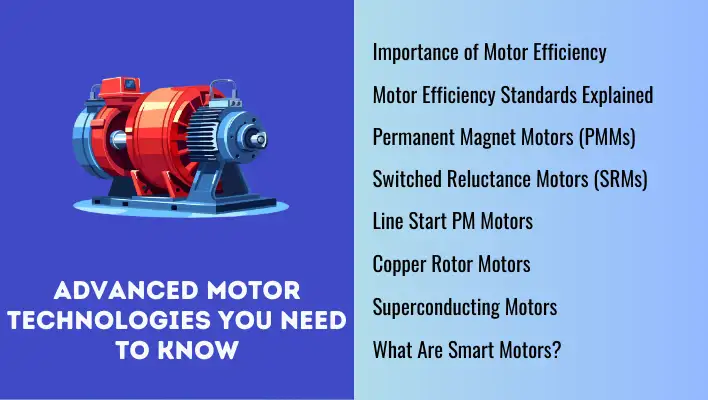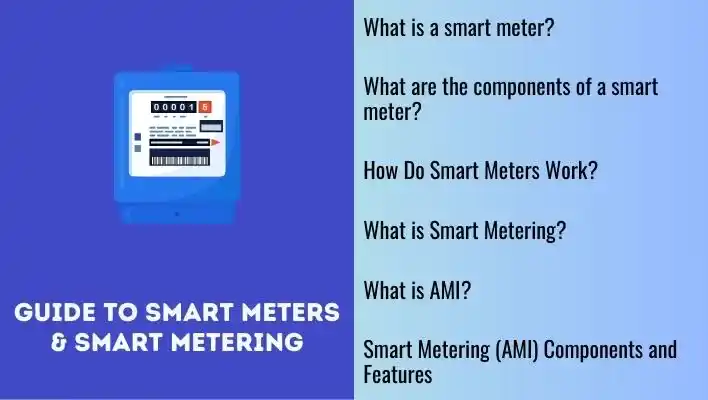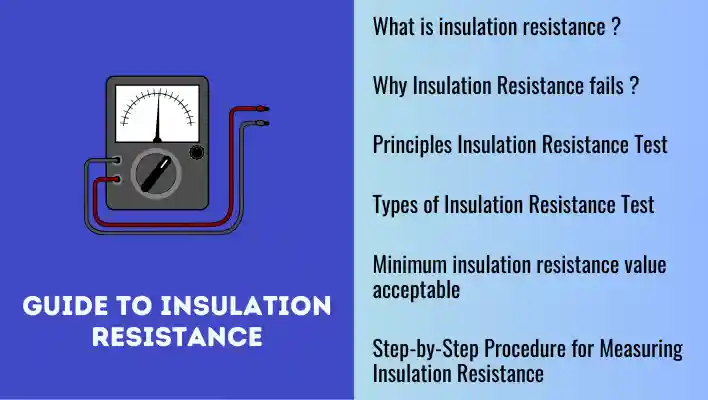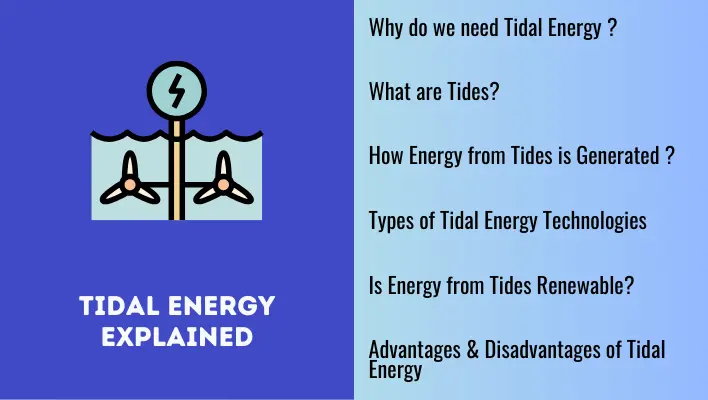Energy Manager Audit Report
An energy audit was conducted in a large machine shop and the audit report suggested replacing 30 machine motors with energy efficient motors. The loading details of old and new motors are given below:
| Motor Rating in KW | Operating Load % | Old Motor Efficiency % | New Motor Efficiency % | No of Motors |
| 7.5 | 75 | 86 | 89 | 12 |
| 11.5 | 85 | 88 | 91 | 7 |
| 15 | 70 | 89 | 92 | 11 |
Assuming motor loading in both cases remains the same, calculate the annual energy savings, for 4000 hours of operation per year.
So before getting in to the solution lets understand why the energy manager might suggest energy efficient motors. Also we will discuss energy efficient motors and kWh savings.
Also Read: How to find apparent and reactive power of motor | Energy Manager exam question
Why Energy Managers recommend the use of Energy Efficient Motors?
Energy managers recommend the replacement of old motors with energy-efficient ones for several reasons. Here are some reasons why an energy manager might recommend such a change:
- Energy Cost Savings: The primary motivation is often the potential for significant energy cost savings. Energy-efficient motors are designed to convert more of the electrical input into useful mechanical power, reducing energy waste and lowering electricity bills.
- Operational Efficiency: Energy-efficient motors generally operate at higher efficiency levels, meaning they can achieve the same or better output with less energy input. This increased operational efficiency can lead to improved overall system performance.
- Financial Incentives: In some regions, there are financial incentives, rebates, or tax credits for businesses that invest in energy-efficient technologies. Energy managers may recommend motor replacements to take advantage of these incentives, further offsetting the initial costs.
- Environmental Impact: Many organizations are increasingly focused on sustainability and reducing their environmental footprint. Energy managers may advocate for energy-efficient motors as part of a broader corporate commitment to environmental responsibility.
- Technology Advancements: Energy managers stay informed about advancements in technology, including motor design. If newer motors offer improved efficiency, performance, and reliability, they may recommend upgrades to benefit from these advancements.
- Lifecycle Cost Analysis: Energy managers often conduct lifecycle cost analyses to evaluate the total cost of ownership over the lifespan of equipment. While energy-efficient motors may have higher upfront costs, their lower operational costs and longer lifespan can make them more cost-effective in the long run.
- Reduced Downtime and Maintenance: Energy-efficient motors often require less maintenance and have longer operational lifespans. This can result in reduced downtime for maintenance activities and lower overall maintenance costs, which energy managers view favorably.
- Improved Power Factor: Energy-efficient motors may contribute to a better power factor, which is important for optimizing the use of electrical power in a facility. A higher power factor can lead to more efficient use of the electrical distribution system.
In summary, energy managers advocate for the replacement of old motors with energy-efficient ones to achieve a balance between operational efficiency, cost savings, regulatory compliance, and environmental sustainability. These recommendations are often made as part of a broader energy management strategy within an organization.
Also Read: Energy Manager Exam | Co-generation power plant Numerical problem with solution
What are Energy Efficient Motors?
Motor efficiency is the ratio of mechanical power output to electrical power input, typically expressed as a percentage.
An energy-efficient motor is an electric motor engineered for higher efficiency, ensuring a greater conversion of electrical input power into useful mechanical output power.
These motors are meticulously designed to minimize energy losses during the conversion process, resulting in reduced energy consumption and enhanced overall performance.
To enhance efficiency the motor design focuses on reducing intrinsic losses by carrying out the following improvements,
- Use of low loss silicon steel.
- Thicker wire for reducing resistance.
- Incorporating thinner lamination to reduce energy losses associated with eddy currents and hysteresis.
- Usage of longer core to potentially increase the amount of active magnetic material.
- Designing a smaller air gap between rotor and stator to improve magnetic coupling which allows for more efficient transfer of magnetic energy.
- Use of copper instead of aluminum in the rotor.
- Superior bearings and smaller fans.
Energy efficient motors offer advantages not typically found in standard motors. Thanks to improved manufacturing techniques and superior materials, these motors often boast higher service factors, longer insulation and bearing lives, lower waste heat output, and reduced vibration, all contributing to increased reliability.
Good To Know: Energy efficient motors are not deployed in applications characterized by high intermittency or requiring special torque, such as hoists and cranes, traction drives, punch presses, machine tools and centrifuges. Additionally, they are not suitable for flame-proof operations, fire pumps, and applications running below 750 RPM. The majority of energy efficient motors currently manufactured are designed for continuous duty cycle operations.
Kilowatt-hour (kWh)
Kilowatt-hour (kWh) savings refer to the amount of electrical energy that is conserved or reduced as a result of implementing energy efficiency measures.
The term is commonly used to quantify the positive impact of energy-saving initiatives, upgrades, or changes in equipment and processes. Kilowatt-hour is a unit of energy, and it is a measure of electrical consumption over time.
When energy managers and auditors take steps to improve energy efficiency, they aim to reduce the amount of electricity consumed for a given task or operation. The reduction in electricity usage is measured in kilowatt-hours. The formula to calculate kWh savings is straightforward:
Kilowatt-hour Savings = Initial Consumption − Final Consumption
Here’s a breakdown of the components:
- Initial Consumption: This represents the amount of electricity consumed before the energy-saving measures are implemented. It could be the consumption of an old, less efficient system or equipment.
- Final Consumption: This represents the amount of electricity consumed after the implementation of energy efficiency measures, such as upgrading to energy-efficient equipment or improving processes.
The difference between the initial and final consumption provides the kilowatt-hour savings. Positive savings indicate a reduction in energy consumption, while negative values would suggest an increase.
Also Read: Calculate motor temperature rise from unbalanced voltage | Energy Manager Exam question
Formulas Used for Solution
| For calculating Actual Load of Old motor in KW | [latex]Actual Load KW (Old Motor) = \frac{Motor Rating (KW)}{Old Motor Efficiency\%}\times Operating Load\%[/latex] |
| For calculating Actual Load of New motor in KW | [latex]Actual Load KW (New Motor) = \frac{Motor Rating (KW)}{New Motor Efficiency\%}\times Operating Load\%[/latex] |
| Annual Energy Savings | Energy Savings (kWh) = Operating Hours [Actual Load (Old Motor) – Actual Load (New Motor)] No of Motors |
Solution to the Audit Report
Given:
| Motor Rating in KW | Operating Load % | Old Motor Efficiency % | New Motor Efficiency % | No of Motors |
| 7.5 | 75 | 86 | 89 | 12 |
| 11.5 | 85 | 88 | 91 | 7 |
| 15 | 70 | 89 | 92 | 11 |
Solution:
Calculation of Actual Load of New and Old Motors as per operating load and efficiency.
| Motor Rating in KW | Operating Load% | Old Motor Efficiency % | New Motor Efficiency % | Actual Old Motor Load In kW | Actual New Motor Load In kw |
| [latex]= \frac{Motor Rating (KW)}{Old Motor Efficiency\%}\times Operating Load\%[/latex] | [latex]= \frac{Motor Rating (KW)}{New Motor Efficiency\%}\times Operating Load\%[/latex] | ||||
| 7.5 | 75 | 86 | 89 | [latex]= \frac{7.5}{0.86}=8.72\times0.75=6.54[/latex] | [latex]= \frac{7.5}{0.89}=8.43\times0.75=6.32[/latex] |
| 11.5 | 85 | 88 | 91 | [latex]= \frac{11.5}{0.88}=13.07\times0.85=11.11[/latex] | [latex]= \frac{11.5}{0.91}=12.64\times0.85=10.74[/latex] |
| 15 | 70 | 89 | 92 | [latex]= \frac{15}{0.89}=16.85\times0.7=11.79[/latex] | [latex]= \frac{15}{0.92}=16.30\times0.7=11.41[/latex] |
Calculation of Annual Energy Savings,
| Annual Energy Savings | = Operating Hours [Actual Load (Old Motor) – Actual Load (New Motor)] No of Motors |
| Annual Savings for 7.5 KW Motors,12 nos, operating 4000 hours | = [ 4,000 (6.54 – 6.32) x 12 ] = 10,560 kWh |
| Annual Savings for 11 KW Motors, 7 nos, operating 4000 hours | = [ 4000 (11.11 – 10.74) x 7 ] = 10,360 kWh |
| Annual Savings for 15 KW Motors, 11 nos operating 4000 hours | = [ 4,000 (11.79 – 11.41) x11 ] = 16,720 kWh |
Therefore, total annual savings,
| Total annual savings for 30 nos high efficiency motors | = 10,560 kWh + 10,360 kWh + 16,720 kWh |
| = 37,640 kWh |
The audit report problem statement is taken from Energy Manager Exam – Paper 3, September 2019.






